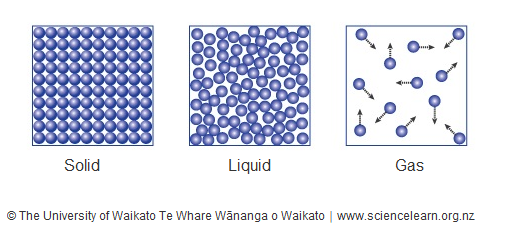Introduction to Pressure
Subject: Science

Overview
Solids provide pressure due to their weight, while liquids and gases exert pressure on all surfaces. Solids have unique shapes and volumes, while liquids have small intermolecular gaps, preventing pressure from being compressed. Compressed gases have larger molecular spaces and can be compressed to decrease volume, but their pressure is less successful. The pressure created by a hand on a balloon must be sufficiently compressed to convey the pressure, similar to how liquids do.
|
Pressure exerted by water on the pipe wall |
Pressure exerted by the air on the postcard |
The figures above depict the pressure that a solid, liquid, or gas is applying. Pressure is applied to the foam's surface when a brick is placed on it [figure]. Because of their weight, solids provide pressure on surfaces. The pipe seen in Fig. broke as a result of the water's pressure acting on its walls. Water erupted from the burst pipe, applying intense pressure to the walls on both the left and right sides. In a similar vein, the figure depicts how the wind pushes the postcard upward while keeping it from fallingThe normal force (thrust) that gases and liquids apply to the walls of different objects produces pressure. A thrust is a force that acts perpendicular to an object's surface. The Newton is its SI unit. Pressure is the force exerted on an item per unit area. Pascal, or Newton per square meter, is the SI unit of pressure (N/m2).
Liquid and gas are referred to as fluids since they are things that flow readily. The fluids exert pressure just like the solids do. Fluid presses on all of the vessel's walls in addition to the bottom, where it is stored.
The fluid presses against the surfaces of an object when it is submerged in it. The upward force that the water pressure exerts on the balloon's surface is depicted in Figure. The upward force created by the air pressure will cause a balloon filled with hydrogen or helium to take flight when it is released into the atmosphere. The balloon will flow at a height where the upward force of the air and its weight are equal, as the air density drops with height.
Transmission of Pressure
The molecular structures of solid, liquid, and gaseous states are shown in Figure. The molecules that make up solids are closely spaced from one another. They have a unique shape and volume. The molecules of a solid do not move; they stay in one location. When a force is applied to one side of a solid object, the pressure that results is not distributed over the whole object. However, because molecules may move through both liquid and gas, pressure is communicated in the fluid inside a closed container.
|
Structure of Molecules in Matter |
A process of compressing fluid in a closed vessel |
For instance, the water-filled syringe's piston does not move in when it is pushed in. This indicates that the syringe's water cannot be compressed. However, it is simple to press the piston in a syringe that is loaded with air.However, similar to a syringe filled with water, it becomes harder to push the piston farther when the air inside it gets compressed.
Liquid molecules have very small intermolecular gaps between them. The liquid molecules cannot be forced to come closer together by external pressure, as Figure illustrates. "As a result, the liquid's volume in the closed vessel does not decrease because pressure cannot compress it. As a result, pressure applied to the liquid at any one location is uniformly distributed in all directions. As an illustration, the toothpaste is shown to come out of the mouth in the figure because the paste is subjected to pressure from pushing the tube.However, compared to liquids, gases have bigger molecular spaces. Gases can have their volume decreased by exerting external pressure on them. As a result, compressed gas transmits pressure, albeit less successfully than liquid. The figure illustrates the pressure that is created when a hand is placed on a balloon that is filled with compressed air and that pressure is distributed throughout the balloon. Therefore, the gas must first be sufficiently compressed in order to convey the pressure, just like the liquid does.
Things to remember
- Solids provide pressure on surfaces due to their weight, while liquids and gases exert pressure on vessels and objects.
- The SI unit of pressure is Pascal, or Newton per square meter.
- Solids have unique shapes and volumes, and pressure is not distributed over the whole object. However, pressure is communicated within a closed container.
© 2021 Saralmind. All Rights Reserved.






 Login with google
Login with google